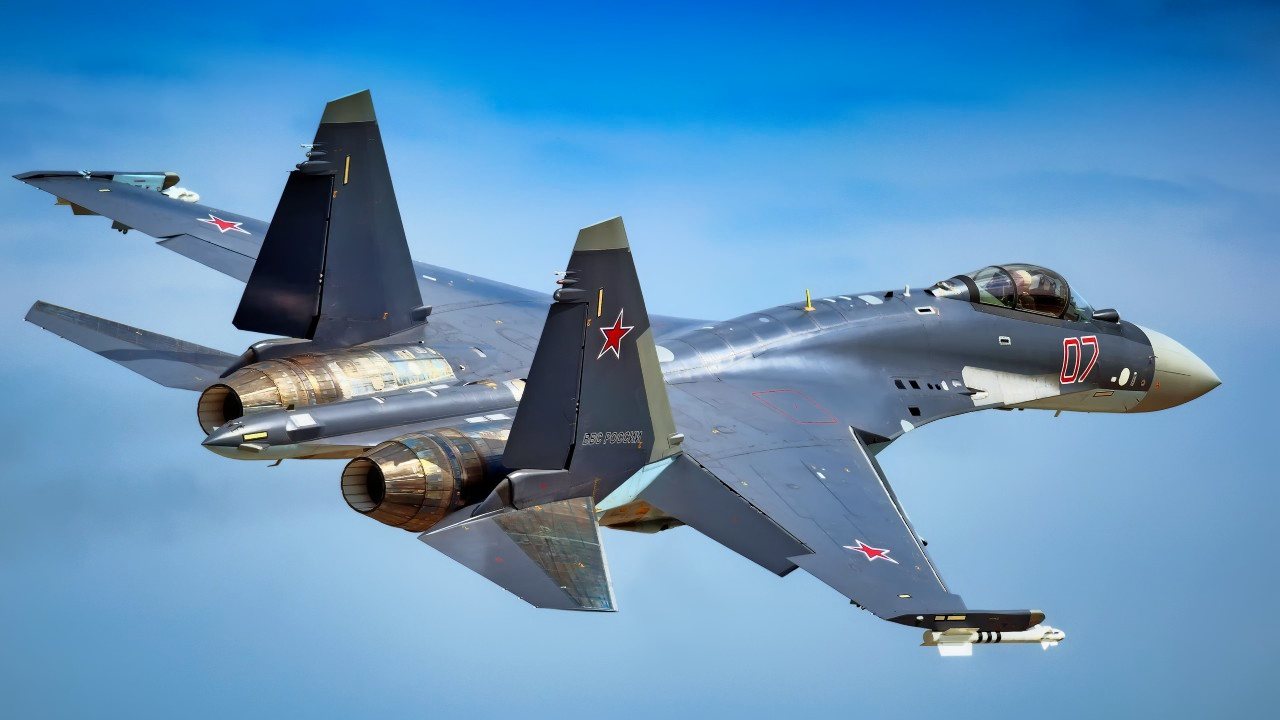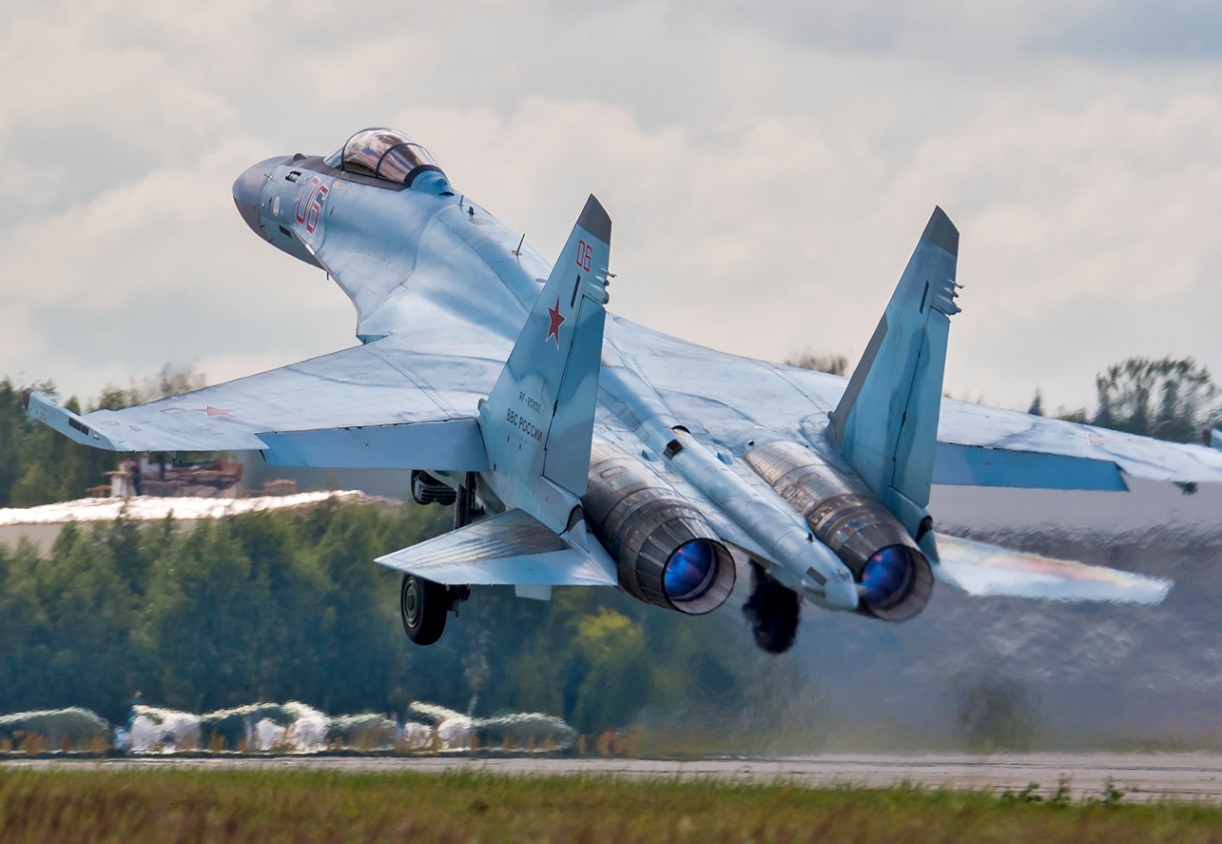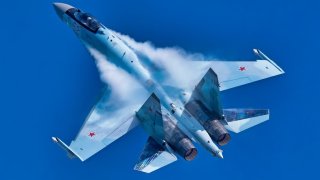Russia's Su-35S Fighter Is Trying to Make a Comeback in Ukraine
Despite being an air superiority fighter at heart, the Su-35S has largely failed to evade the sophisticated air-defense missiles that are being provided to Ukraine from Western countries.
Russian authorities have long touted the Sukhoi Su-35S (NATO reporting name Flanker-E”) as being among its most capable combat aircraft in widespread service—and this week, it was announced that the Kremlin received a new batch of the multirole fighters. According to a report by Russian state media, the new aircraft were produced by the Gagarin Aircraft Plant in Komsomolsk-on-Amur and flew to a deployment airfield after passing ground and flight trials.

“The plant in Komsomolsk-on-Amur has reached a rhythmical production pace this year. It is the second batch of combat aircraft delivered to the Aerospace Forces. The plant fulfils the commitments in the deliveries of new aircraft and works to create new batches of serial Su-35 and Su-57 jets,” United Aircraft Corporation (UAC) CEO Yury Slyusar told state media outlet TASS.
How capable is the Su-35S?
The Su-35 was noted for essentially being a heavily upgraded derivative of the Su-27 aircraft (NATO reporting name Flanker) that was originally intended for export. It was developed to keep pace with U.S. competitors, and has been compared to the U.S. Air Force’s F-15EX Eagle II—so not exactly a fourth-generation fighter, but not really close to a fifth-generation warplane either.
While initially touted as an air superiority fighter, the “fourth-generation++” Su-35 has proven to be a capable multirole aircraft that can be used in an air dominance role as well as precision ground strikes. However, it entered service with the Russian Air Force in 2014 and made its first combat deployment in Syria in 2015—where it was employed to provide cover for other Russian aircraft on bombing missions. The Su-35 was further utilized in guided and unguided strikes against ISIS and rebel forces in Syria.
It is much more than just an updated Su-27.
As reported by Harrison Kass for The National Interest, the Su-35 is visually discernible from its predecessor thanks to the use of canards placed forward of the wings on the fuselage. The Flanker-E’s canards, plus a reshaped wing leading-edge extension, allow for the redirection of airflow, which reportedly solved a buffeting problem that plagued the Su-27 during flight at high angles of attack.
Russian state media further noted that the Su-35S is distinguished by a new digital avionic complex, new radar with a passive phased antenna array, and an increased number of simultaneously tracked and attacked targets, along with plasma-ignition engines of increased capacity, and controllable vectoring. The Flanker-E’s engines are reported to correspond to fifth-generation power plants as they develop supersonic speed without a boost.

Its armament includes a GSh-30-1 30mm autocannon with 150 rounds, along with 17,630 pounds of payload on twelve external points. It can carry a variety of air-to-air, air-to-surface, anti-radiation, and anti-ship missiles, as well as a number of TV, laser-, and satellite-guided bombs. The Su-35 is capable of employing an entire range of existing and future air-launched air-to-air and air-to-surface missiles, including precision weapons. It carries a 30mm GSh-30-1 gun, short-, medium- and, long-range air-to-air missiles; Kh-31, Kh-35U, or Kh-59M anti-ship missiles; and various types of precision munitions and rockets as its basic armament. The fighter integrates the IUS-35 information and control system and a phased array radar capable of detecting targets at a range of 100 km-400 km.
Russia Needs More
Though the total number of new Su-35S aircraft entering service hasn’t been disclosed, the Kremlin will need every fighter it can get—as it has lost upwards of a dozen of the Flanker-Es just this year in the ongoing fighting against Ukraine.

Despite being an air superiority fighter at heart, the Su-35S has largely failed to evade the sophisticated air-defense missiles that are being provided to Ukraine from Western countries.
Maya Carlin, also writing for The National Interest, added that as the war drags on, and Kyiv receives additional weapons shipments from the United States and other NATO allies, the rate at which Moscow is losing its top fighter platform will no longer be sustainable.
Author Experience and Expertise: Peter Suciu
Peter Suciu is a Michigan-based writer. He has contributed to more than four dozen magazines, newspapers, and websites with over 3,200 published pieces over a twenty-year career in journalism. He regularly writes about military hardware, firearms history, cybersecurity, politics, and international affairs. Peter is also a Contributing Writer for Forbes and Clearance Jobs. You can follow him on Twitter: @PeterSuciu. You can email the author: [email protected].
All images are Creative Commons.


